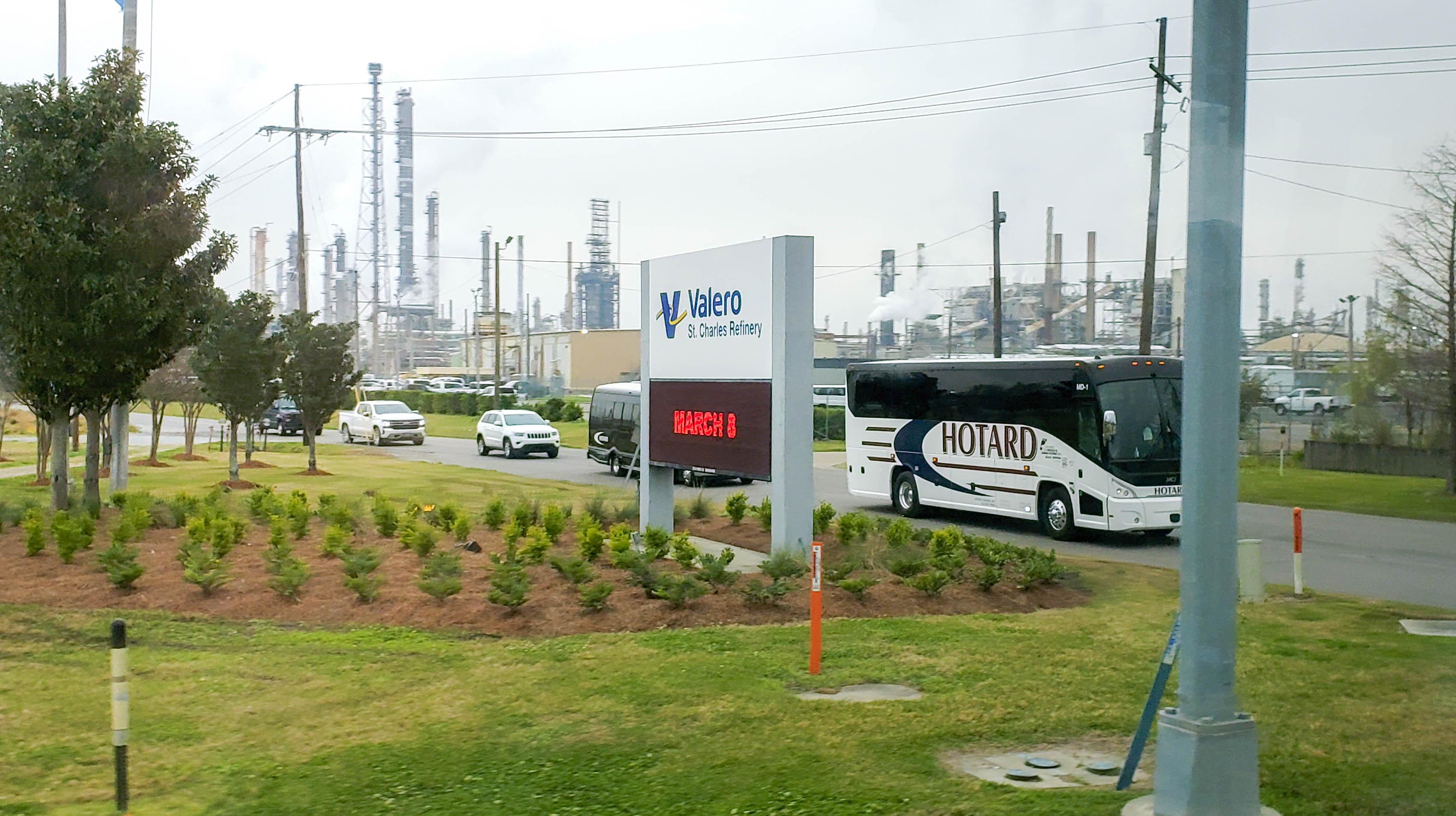
(Photo: Iowa Soybean Association)
Farm, oil fields merge as Valero goes all-in on renewable fuels
March 10, 2022 | Aaron Putze, APR
“U.S. is the Saudi Arabia of agriculture.”
That declaration from Eric Honeyman, VP of renewable operations and low carbon fuels for Valero, welcomed more than 100 U.S. soybean farmers – including Iowa Soybean Association President Robb Ewoldt of Davenport – for a tour of the company’s New Orleans refinery Tuesday.
The facility is strategically located adjacent the Mississippi River and near the Gulf of Mexico and refines 340,000 barrels of oil daily. Valero is the nation’s largest independent oil refinery and producer of renewable diesel, a biofuel made from a variety of feedstocks including soybean oil.
“I’ve had to learn about agriculture really fast and what I’ve learned is incredible,” said Honeyman.
Valero and Darling Ingredients have invested $3 billion in renewable diesel production, an amount likely to increase in the coming years, Honeyman added.
“The world is asking for lower-carbon fuel and it’s on the short list of nearly every state legislature. This isn’t a short-term play but a long-term one as global demand grows.”
Honeyman said one-half of Valero’s strategic capital is being invested in renewable fuel production, with currently production capacity of more than 1 billion gallons of renewable diesel annually.
“There’s a lot of talk about renewable energy and products like renewable diesel because they are working,” he added.
Research by Argonne National Labs found renewable diesel made from soybean oil has a 40% lower greenhouse gas emissions footprint over the life of a vehicle than an electric vehicle.
The tour of the Valero facility was organized by the Clean Fuels Alliance America and held in advance of Commodity Classic which officially opens today (Thursday, March 10) in the Crescent City.
“For America’s largest carriers – the ones you fly -- sustainable aviation fuel, or SAF, is the ticket for moving more people by air while lowering the carbon footprint.”
Back